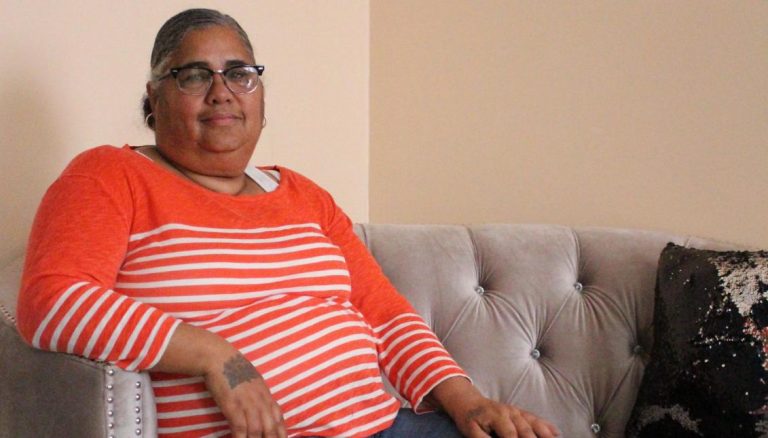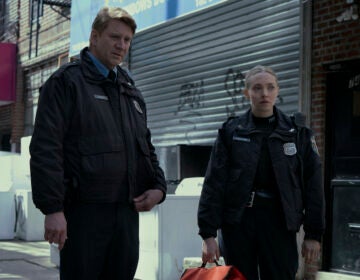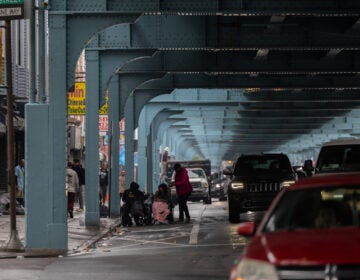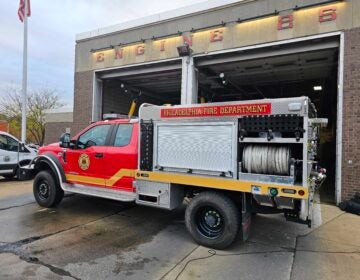Ramona: A story of perseverance in Kensington
My name is Ramona Hieye. I grew up in Kensington. My Kensington had drugs and violence, just like now. My Kensington was no less tragic. But nobody seemed to care.

Ramona Hieye in her living room at her home in North Philadelphia. (Vanessa Dávila/AL DIA News)
This article originally appeared on Al DIA. Lea en español.
–
Women are half the population, but only one in four people who appear in news stories — an issue we’re trying to correct at The Fuller Project, a nonprofit journalism organization that reports on critical stories about women. One national news story that exemplifies how often women’s experiences are overlooked is the opioid crisis. Unfortunately, the media hasn’t learned from mistakes in covering the crack epidemic of the 1990s, when domestic violence proved to be a leading factor in the spread of HIV and crack. Women who are abused are up to 10 times more likely to develop a dependency on drugs, which they often use to self-medicate or cope with toxic stress from past trauma. Today, domestic violence is driving women to opiates, yet we rarely hear their stories, especially not the stories of overcoming addiction.
Here’s one woman’s story of perseverance:
My name is Ramona Hieye. In the 1960s, I grew up in Kensington, a very different version of the neighborhood you see in the news today. My Kensington had drugs and violence, just like now. My Kensington was no less tragic. But nobody seemed to care about my Kensington at the time. Nobody seemed to care about the stories of women like me.
When I was 13 years old, in 1972, my stepfather kicked me out of the house for the first time. I’d grown up with my mother and sisters, but once this man (who I came to despise) came into the picture, I started down a dark path. He was physically abusive. He never considered me his own. Sometimes, I’d sneak back into the house while he was at work, just to grab a bite to eat.
It took less than a year of feeling angry and alone before I tried my first prescription opiate. I numbed my trauma with drugs, but they also led to a shelter. For years, drug houses provided the only reliable roof over my head. The most reliable work, too. I began running the streets of Kensington, selling enough baggies to finance my own habit. My regiment was heroin in the mornings, then crack throughout the day — a bag per hour at the peak of my addiction.
Your body gets used to the drugs and you crave more. In recovery, we call that a monster and the monster got bigger and bigger. I turned to shoplifting and stealing cars for income. I’d go days without sleeping, then squat overnight in abandoned houses. I didn’t want my mom to see me. I didn’t want to hurt her. I would wake up in tears, sometimes not being able to walk.
Jail saved my life several times. After a while, it felt like home. I was always in and out — 16 times over the course of my life — so the guards all knew me behind bars. I’d spend months getting clean, sober, and focused on a rebound, although it often didn’t last. At one point, my judge told me, “I am tired of seeing your face.” He then told me to look outside the window of the courtroom and count how many birds there were. When I counted three, he told me that’s how many more times he’d give me. (In the end, I’d need a few more tries.)
My mother never gave up on me, even when I’d nearly done so myself. In 2009, she passed away after I had just got out of prison. It’s one of my biggest regrets, not being with her at the end. I couldn’t picture life without her. She was my support system. And I fell right back into using drugs. But the lasting memory of my mother proved to be a turning point.
After my release, I immediately entered rehab. Using methadone, I weaned myself off opiates. Forced to find a new support system, I reconnected with a childhood friend who understood my struggle. Now I call him my husband. With his help and others in the community of recovery, I’ve been drug-free for 16 years.
I feel blessed to be a recovering addict. Being sober, I’ve realized that nobody has to be a puppet to substances, and I am living proof. It’s a beautiful feeling to not be controlled by a drug smaller than your toenail.
I hope my story can urge other addicts to never give up, especially women. After all, women who are abused are 10 times more likely to develop a dependency on drugs. The data tells us that addiction-prevention efforts are taking hold much better among women in Philadelphia, however. Between 2010 and 2017, the number of emergency room visits for opioid- and heroin-related causes has grown by 87 percent among men. For females, it ticked up just 6 percent. Women have been a shrinking share of fatalities in the city in recent years, too. I’m proudly not one of those statistics.
When I first got sober, I lived in a filthy house where the roof leaked. My husband and I set out to buy a house, saving the money that would have gone to bad habits in my younger years. I sold stuff at flea markets, going into higher-income neighborhoods and recycling their trash. You’d be surprised to see what people are willing to throw away. Miracles do happen.
 This article is part of Broke in Philly, a collaborative reporting project among more than 20 news organizations, focused on economic mobility in Philadelphia. Read all of our reporting at brokeinphilly.org.
This article is part of Broke in Philly, a collaborative reporting project among more than 20 news organizations, focused on economic mobility in Philadelphia. Read all of our reporting at brokeinphilly.org.
WHYY is your source for fact-based, in-depth journalism and information. As a nonprofit organization, we rely on financial support from readers like you. Please give today.




